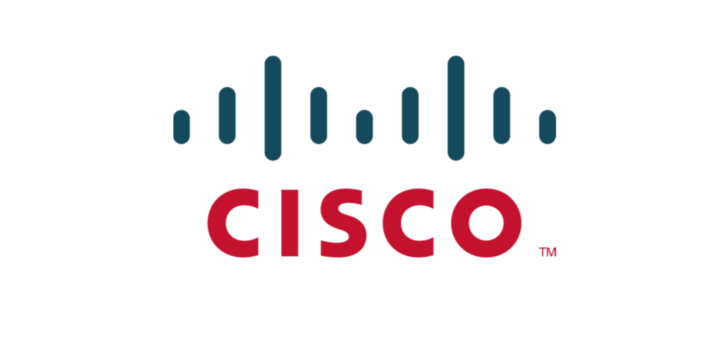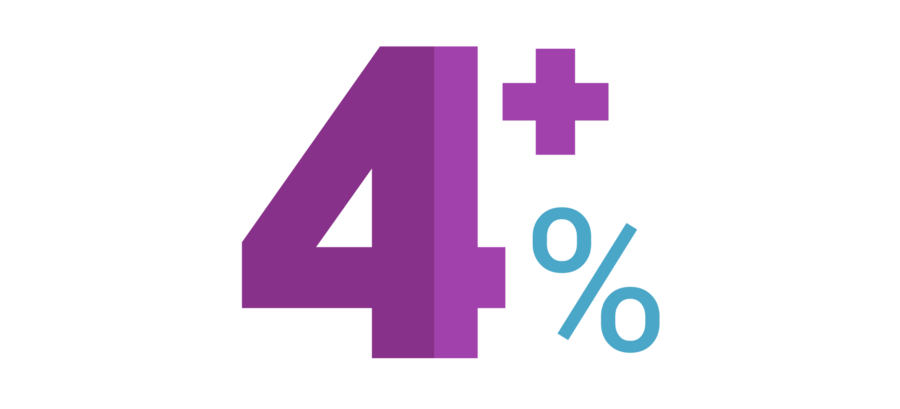
Cisco Braces for a Longer Downturn But Continues Offering a Safe Dividend
Shares of Cisco fell more than 11% on Thursday following the company's latest earnings release.
Sales declined 9% last quarter, slightly better than expected, but management is not seeing a V-shaped recovery.
CEO Chuck Robbins said the environment feels "very much like it felt 90 days ago" and provided guidance for a somewhat steeper revenue decline of 9% to 11% in the firm's current fiscal quarter, which runs through October.
Cisco has spent the last few years shifting its business to emphasize more recurring software and services offerings, which accounted for 51% of revenue in fiscal 2020.
However, more work is needed to better insulate the firm from cyclical swings in IT spending.
Cisco's Infrastructure Platforms division (55% of sales), which primarily sells networking switches and routers used in buildings, offices, and corporate data centers, remained the most challenged.
This segment's revenue fell 16% last quarter. While many of Cisco's biggest customers continued investing in their infrastructure, smaller enterprise and commercial customers have paused spending until they see what comes out of the pandemic.
Across the rest of the business, Services (27% of revenue) was flat as COVID-related weakness in advisory services offset growth in software and support services.
Security (7% of sales) remained a bright spot, growing 10% as companies continue investing more to protect their networks and devices in a remote world.
Finally, Applications (11% of revenue) disappointed with a 9% sales decline despite double-digit growth in videoconferencing platform WebEx, which was more than offset by weakness in on-site collaboration solutions used by businesses.
Investors now fear that Cisco could face a longer downturn than previously expected.
The good news is that the networking equipment giant remains in great financial shape, so we don't expect any risk to Cisco's Very Safe-rated dividend.
Cisco ended the quarter with $29.4 billion of cash compared to less than $15 billion of total debt.
Coupled with its AA- credit rating from Standard & Poor's, the company maintains excellent financial flexibility to continue investing in and adapting its business.
Cash flow has remained resilient, too. While sales fell 9% last quarter, operating cash flow was down only 4% year-over-year to settle at $3.8 billion.
For context, Cisco's dividend costs $1.5 billion per quarter. With relatively modest capital spending needs, the company's free cash flow payout ratio remained near 40% last quarter, a healthy level.
Cisco's dividend growth will likely remain muted in this environment (annual dividend increases are historically announced in February), but we continue to believe the company's cash flow generation and balance sheet keep the payout quite secure.
What's harder to discern in these situations is whether or not Cisco's long-term outlook is changing for the worse.
After all, the pandemic has potential to accelerate many companies' shift to the public cloud.
Around 23% of computing workloads are on public cloud services today, and a recent Goldman Sachs survey of chief information offices believes that figure could hit 43% by mid-2023, according to the Wall Street Journal.
If the new work-from-home era results in more companies favoring a distributed digital world that runs on the public cloud, then presumably they will not need to maintain a complex IT infrastructure, reducing their need for networking equipment (infrastructure platforms account for 55% of Cisco's sales).
The majority of Cisco's switches don't go to data centers, providing some insulation from this trend, but the continued rise of cloud providers such as Amazon could pressure Cisco's position as one of the top IT vendors over time.
In addition to Cisco's continued emphasis on software, services, and security solutions, management is implementing several changes in response to the pandemic.
Cisco announced plans this week to accelerate the transition of its R&D spending into cloud security and cloud collaboration offerings, moving further away from the on-premises aspects of its portfolio.
Additionally, the company is moving forward more aggressively to sell the majority of its portfolio, including its hardware offerings, as a service.
This would generate more stable revenue to protect against cyclical downturns in one-time equipment sales while also potentially creating even stickier customer relationships.
Management also revealed plans to take out over $1 billion of costs (about 6% of total operating expenses) over the next few quarters, providing greater flexibility as the business continues transitioning.
Finally, Cisco's balance sheet has substantial capacity for acquisitions to help fill product gaps and bolster the company's portfolio of cloud software applications.
Management didn't suggest a game-changing acquisition was in the plans but said they would continue evaluating opportunities as usual (see Cisco's past acquisitions here).
Overall, we plan to continue holding our shares of Cisco in our Top 20 Dividend Stocks and Conservative Retirees portfolios and believe the stock is reasonably valued following its selloff.
As we said in our May note, the firm maintains an excellent balance sheet, generates solid cash flow, sells many mission-critical products, and has a strong incumbency position which can help it efficiently sell new offerings as customers' needs change.
That said, the pace of technological evolution never slows down, and the pandemic has arguably accelerated change in some of Cisco's markets.
The public cloud could prove to be more of a threat than an opportunity in the years ahead, most notably by causing a secular decline in Cisco's branded networking equipment as IT infrastructure becomes less complex for some businesses.
If Cisco was unable to offset this potential long-term headwind with growth in cloud-focused software and services, we could reevaluate our thesis.
For now, we are willing to give Cisco the benefit of the doubt as it keeps transitioning more of its mix to software and services, deals with a volatile operating environment cause by the pandemic, and continues paying a reliable dividend.
Sales declined 9% last quarter, slightly better than expected, but management is not seeing a V-shaped recovery.
CEO Chuck Robbins said the environment feels "very much like it felt 90 days ago" and provided guidance for a somewhat steeper revenue decline of 9% to 11% in the firm's current fiscal quarter, which runs through October.
Cisco has spent the last few years shifting its business to emphasize more recurring software and services offerings, which accounted for 51% of revenue in fiscal 2020.
However, more work is needed to better insulate the firm from cyclical swings in IT spending.
Cisco's Infrastructure Platforms division (55% of sales), which primarily sells networking switches and routers used in buildings, offices, and corporate data centers, remained the most challenged.
This segment's revenue fell 16% last quarter. While many of Cisco's biggest customers continued investing in their infrastructure, smaller enterprise and commercial customers have paused spending until they see what comes out of the pandemic.
Across the rest of the business, Services (27% of revenue) was flat as COVID-related weakness in advisory services offset growth in software and support services.
Security (7% of sales) remained a bright spot, growing 10% as companies continue investing more to protect their networks and devices in a remote world.
Finally, Applications (11% of revenue) disappointed with a 9% sales decline despite double-digit growth in videoconferencing platform WebEx, which was more than offset by weakness in on-site collaboration solutions used by businesses.
Investors now fear that Cisco could face a longer downturn than previously expected.
The good news is that the networking equipment giant remains in great financial shape, so we don't expect any risk to Cisco's Very Safe-rated dividend.
Cisco ended the quarter with $29.4 billion of cash compared to less than $15 billion of total debt.
Coupled with its AA- credit rating from Standard & Poor's, the company maintains excellent financial flexibility to continue investing in and adapting its business.
Cash flow has remained resilient, too. While sales fell 9% last quarter, operating cash flow was down only 4% year-over-year to settle at $3.8 billion.
For context, Cisco's dividend costs $1.5 billion per quarter. With relatively modest capital spending needs, the company's free cash flow payout ratio remained near 40% last quarter, a healthy level.
Cisco's dividend growth will likely remain muted in this environment (annual dividend increases are historically announced in February), but we continue to believe the company's cash flow generation and balance sheet keep the payout quite secure.
What's harder to discern in these situations is whether or not Cisco's long-term outlook is changing for the worse.
After all, the pandemic has potential to accelerate many companies' shift to the public cloud.
Around 23% of computing workloads are on public cloud services today, and a recent Goldman Sachs survey of chief information offices believes that figure could hit 43% by mid-2023, according to the Wall Street Journal.
If the new work-from-home era results in more companies favoring a distributed digital world that runs on the public cloud, then presumably they will not need to maintain a complex IT infrastructure, reducing their need for networking equipment (infrastructure platforms account for 55% of Cisco's sales).
The majority of Cisco's switches don't go to data centers, providing some insulation from this trend, but the continued rise of cloud providers such as Amazon could pressure Cisco's position as one of the top IT vendors over time.
In addition to Cisco's continued emphasis on software, services, and security solutions, management is implementing several changes in response to the pandemic.
Cisco announced plans this week to accelerate the transition of its R&D spending into cloud security and cloud collaboration offerings, moving further away from the on-premises aspects of its portfolio.
Additionally, the company is moving forward more aggressively to sell the majority of its portfolio, including its hardware offerings, as a service.
This would generate more stable revenue to protect against cyclical downturns in one-time equipment sales while also potentially creating even stickier customer relationships.
Management also revealed plans to take out over $1 billion of costs (about 6% of total operating expenses) over the next few quarters, providing greater flexibility as the business continues transitioning.
Finally, Cisco's balance sheet has substantial capacity for acquisitions to help fill product gaps and bolster the company's portfolio of cloud software applications.
Management didn't suggest a game-changing acquisition was in the plans but said they would continue evaluating opportunities as usual (see Cisco's past acquisitions here).
Overall, we plan to continue holding our shares of Cisco in our Top 20 Dividend Stocks and Conservative Retirees portfolios and believe the stock is reasonably valued following its selloff.
As we said in our May note, the firm maintains an excellent balance sheet, generates solid cash flow, sells many mission-critical products, and has a strong incumbency position which can help it efficiently sell new offerings as customers' needs change.
That said, the pace of technological evolution never slows down, and the pandemic has arguably accelerated change in some of Cisco's markets.
The public cloud could prove to be more of a threat than an opportunity in the years ahead, most notably by causing a secular decline in Cisco's branded networking equipment as IT infrastructure becomes less complex for some businesses.
If Cisco was unable to offset this potential long-term headwind with growth in cloud-focused software and services, we could reevaluate our thesis.
For now, we are willing to give Cisco the benefit of the doubt as it keeps transitioning more of its mix to software and services, deals with a volatile operating environment cause by the pandemic, and continues paying a reliable dividend.



